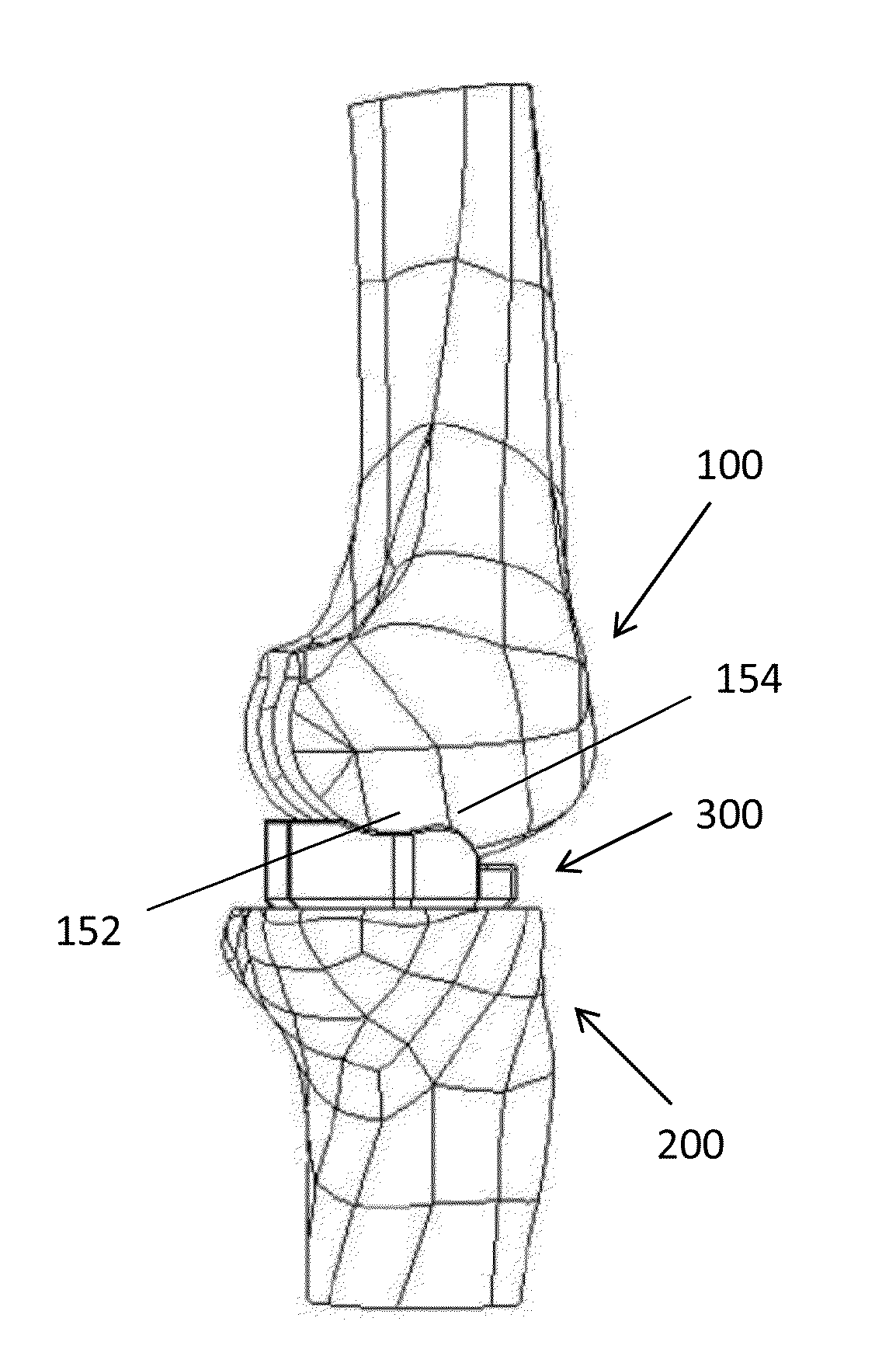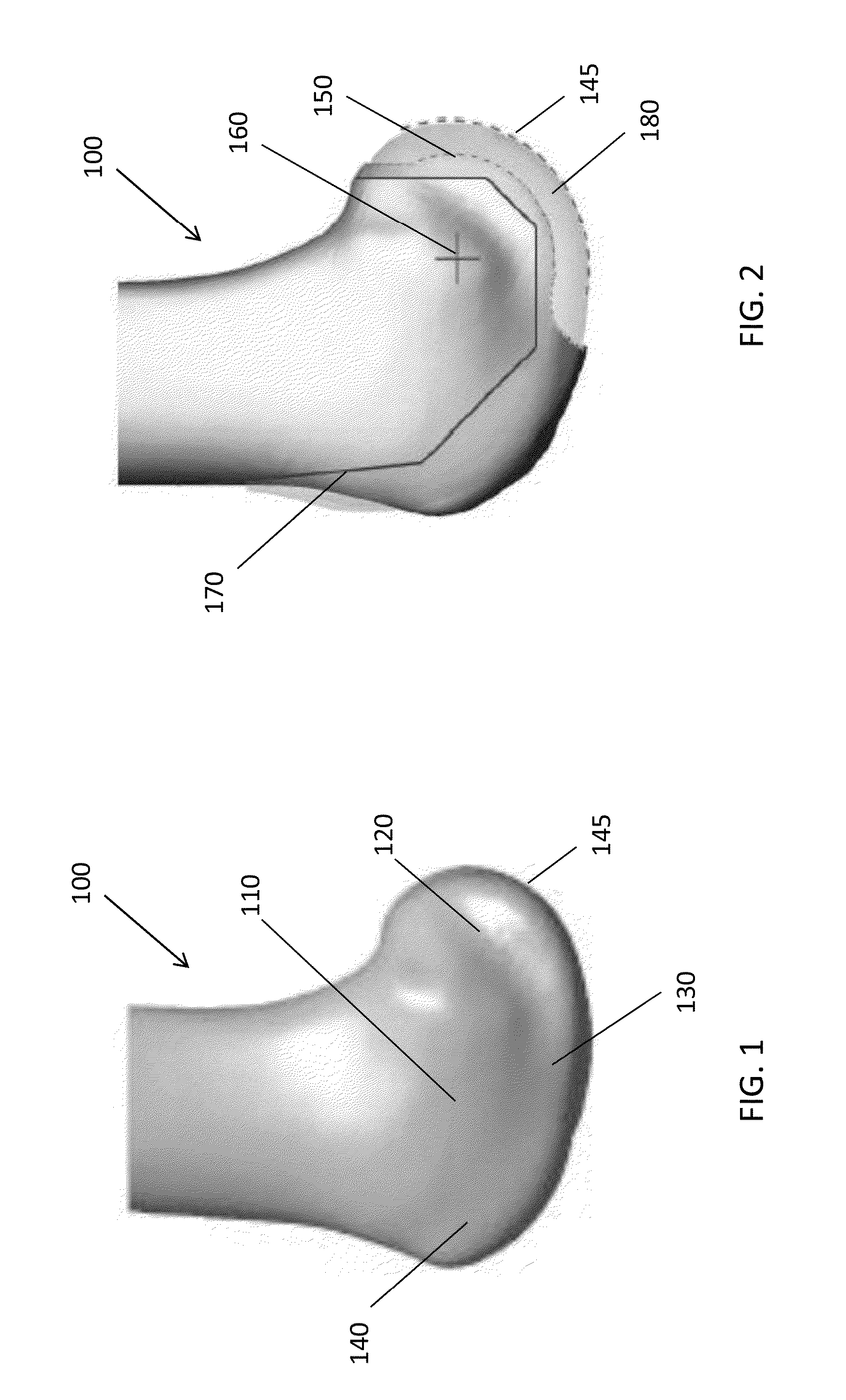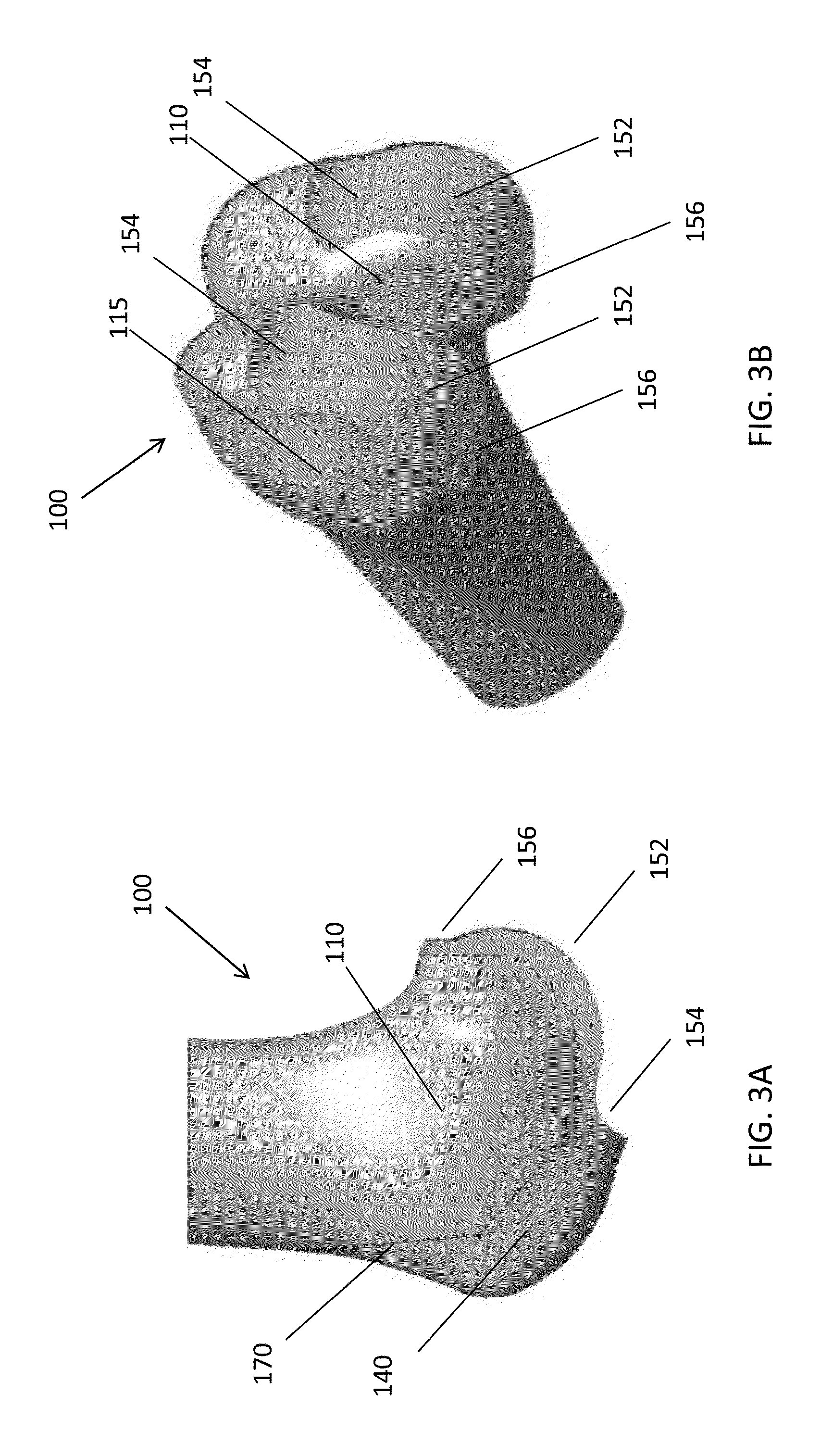Intraoperative dynamic trialing
a dynamic trialing and intraoperative technology, applied in the field of intraoperative dynamic trialing, can solve the problems of not being able to make additional bone resections to optimize kinematics, leaving the surgeon with little or no flexibility in modifying the final bone resection, and only having limited options, so as to facilitate intraoperative trialing and reduce the cost and complexity of surgery.
- Summary
- Abstract
- Description
- Claims
- Application Information
AI Technical Summary
Benefits of technology
Problems solved by technology
Method used
Image
Examples
Embodiment Construction
[0049]As used herein, the term “distal” means more distant from the heart and the term “proximal” means closer to the heart. The term “inferior” means toward the feet and the term “superior” means towards the head. The term “anterior” means towards the front part of the body or the face and the term “posterior” means towards the back of the body. The term “medial” means toward the midline of the body and the term “lateral” means away from the midline of the body. Also, as used herein, the terms “resecting,”“resurfacing,” and “bone preparation” are intended to be interchangeable and generally refer to removing or reshaping bone.
[0050]FIG. 1 illustrates a distal portion of a non-resected distal femur 100 prior a knee replacement procedure. As illustrated, a first condyle 110 includes a posterior portion 120, a distal portion 130, and an anterior portion 140. Generally, in total knee arthroplasty (“TKA”) procedures, up to five cuts are made to the distal femur 100, including distal, po...
PUM
 Login to View More
Login to View More Abstract
Description
Claims
Application Information
 Login to View More
Login to View More - R&D
- Intellectual Property
- Life Sciences
- Materials
- Tech Scout
- Unparalleled Data Quality
- Higher Quality Content
- 60% Fewer Hallucinations
Browse by: Latest US Patents, China's latest patents, Technical Efficacy Thesaurus, Application Domain, Technology Topic, Popular Technical Reports.
© 2025 PatSnap. All rights reserved.Legal|Privacy policy|Modern Slavery Act Transparency Statement|Sitemap|About US| Contact US: help@patsnap.com



